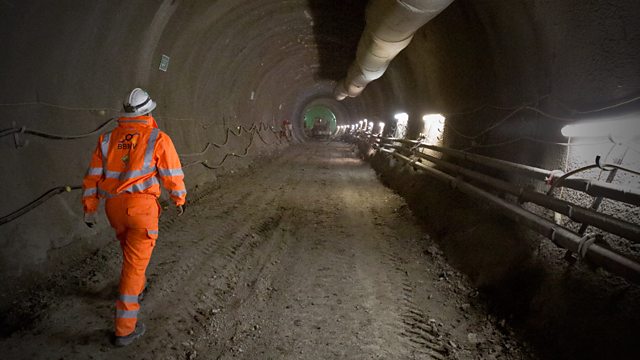Crossrail - Tunnelling under London
Tracey Logan goes underground to find out how Crossrail is using the latest engineering techniques to bore 26 miles of tunnels below London's tube network, sewers and foundations.
Tracey Logan goes underground to find out how Crossrail is using the latest engineering techniques to create 26 miles of tunnels below London's tube network, sewers and foundations and through its erratic, sometimes unpredictable geology. She finds out about the latest science being used in Europe's biggest engineering project.
London sits on a varied geology of deposits of fine-grained sand, flint gravel beds, mottled clay, shelly beds which are sometimes mixed with pockets of water. This sheer variety has presented a challenge to London's tunnel engineers since the early 1800s.
Tracey goes on board one of the huge, 150 metre long, 1000 tonne tunnel boring machines as it makes its way beneath London's Oxford Street. At depths of up to 40 metres it can negotiate London's complex geology with incredible precision and can instantly adjust the pressure it applies at the cutting head to ensure there is no ground movement above.
Its precision engineering means it also follows a route which avoids the many existing foundations, sewers, and the tube network, sometimes travelling just centimetres past the London underground tunnels.
Tracey also finds out how unexploded ordnance from World War II still has to be carefully accounted for while digging beneath the capital.
The tunnel boring machines operate nearly 24 hours a day, 365 days a year and so even has an onboard kitchen and bathroom facilities for the 20 or so operators who make up its 'tunnel gang'.
Last on
Broadcast
- Wed 10 Jul 2013 21:00麻豆社 Radio 4
Podcast
-
![]()
Frontiers
Programme exploring new ideas in science and meeting the researchers responsible


